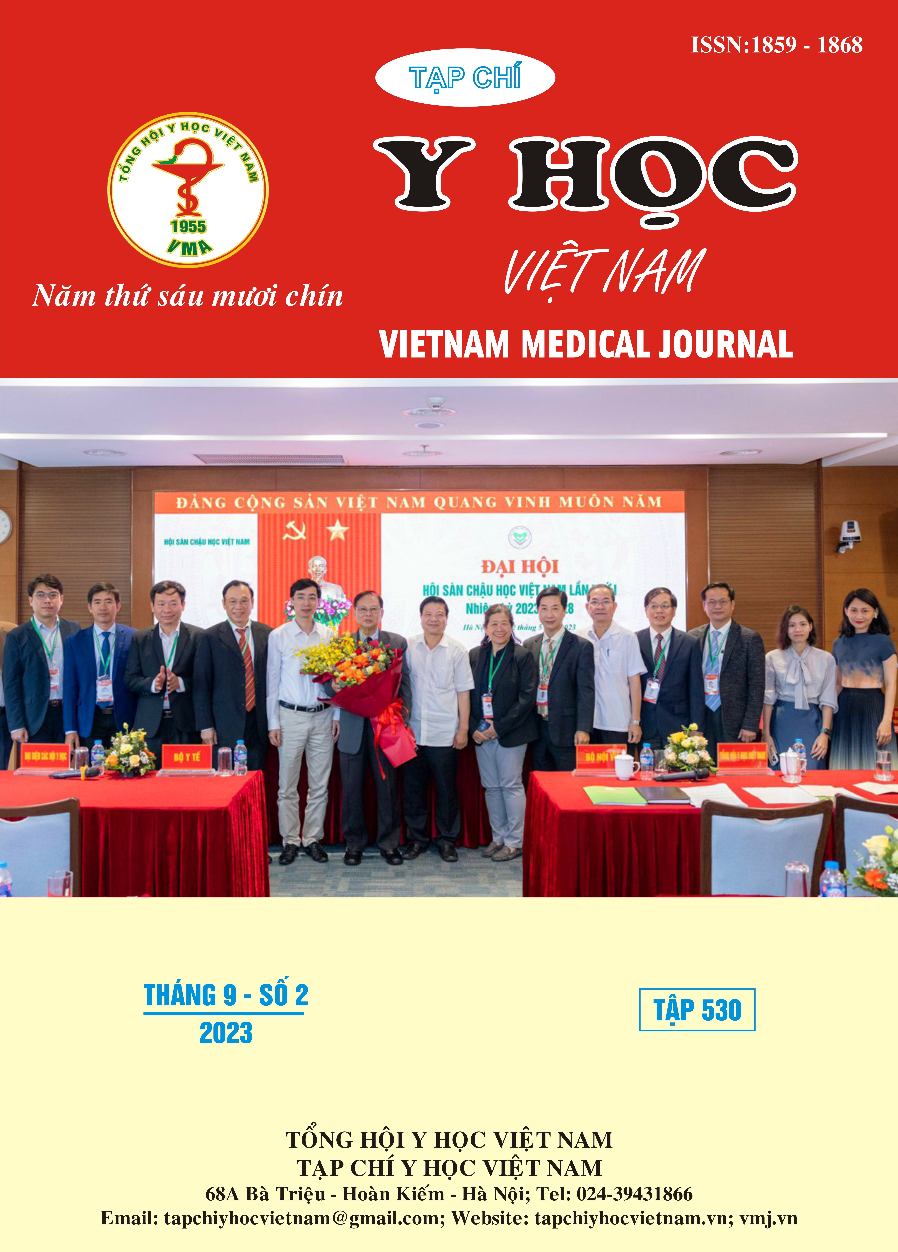RESULTS OF PYELOPLASTY IN TREATMENT CONGENITAL HYDRONEPHROSIS IN CHILDREN
Main Article Content
Abstract
Aim: describe the results of pyeloplasty in the treatment congenital of hydronephrosis in children. Subject: a retrospective study in patients with hydronephrosis who underwent pyeloplasty by Anderson – Hynes approach, A double J stent was placed perioperatively and extracted approximately one month later, from 1.2016 to 12.2018 in the National Hospital of Pediatrics. A surgical indication was differential renal function less than 40% or T/2 > 20 min on the affected kidney. Patients were done kidney ultrasound to measure renal-pelvis anterior-posterior diameter before surgery and repeated ultrasound at follow-up. Percent improvement in renal pelvis anterior-posterior diameter was more than 38% which is defined as pyeloplasty successfully. The rate of success and percent improvement in renal pelvis anterior-posterior diameter were evaluated at 6 months, 12 months, and 24 months after surgery. The data were analyzed by the medical statistical software SPSS 20.0, with p < 0.05 statistical significance. Results: there were 145 one-sided hydronephrosis patients who underwent pyeloplasty, 126 of them were included. Among the included children, 77.0% were male and 23.0% were female; left hydronephrosis was 71.4%, and 28,6% hydronephrosis on the right. Percent improvement in renal pelvis anterior-posterior diameter improved statistically significantly at the time of follow-up and the results were 16.6 ± 10.7 mm, 13.7 ± 8.9 mm, and 11.4 ± 7.2 mm, respectively. Similarly, the success rate increased at the time of follow-up was 73.8%, 86.5%, and 89.7%, respectively, with p < 0.001. The success rate was not related to surgical age and anterior-posterior diameter, which was statistically significant. Conclusion: the success rate was not related to the age of surgery and not to the degree of dilatation of the anterior-posterior diameter of the renal pelvis. Patients with a post-pyeloplasty need to be followed up for at least 24 months and achieved the highest success rate of 89.7%.
Article Details
Keywords
congenital hydronephrosis, pyeloplasty
References
2. O’reilly P.H, Brooman P.J.C, Makp S et al (2001). The long-term results of Anderson–Hynes pyeloplasty. BJU International , 87, 287–289.
3. Fernández-Ibieta M, Nortes-Cano L, José Guirao-Piñera M et al (2016). Radiation-free monitoring in the long-term follow-up of pyeloplasty: Are ultrasound new parameters good enough to evaluate a successful procedure? Journal of Pediatric Urology, 12(4): 230.e1-230.e7.
4. Almodhen F, Jednak R, Capolicchio J.P, et al (2010) Is routine renography required after pyeloplasty? J Urol, 184(3): 1128-33.
5. Hsi R.S, Holt S.K , Gore J.L et al (2015). National Trends in Followup Imaging after Pyeloplasty in Children in the United States. J Urol, 194(3): 777-82.
6. Romao R.L.P, Farhat W.A, Salle J.L.P et al (2012). Early postoperative ultrasound after open pyeloplasty in children with prenatal hydronephrosis helps identify low risk of recurrent obstruction. J Urol, 188(6): 2347-53.
7. Värelä S, Omling E, Börjesson A, et al (2021). Resolution of hydronephrosis after pyeloplasty in children. J Pediatr Urol, 17(1): 102 e1-102 e7.
8. Anderson J.C, and Hynes W (1949). Retrocaval Ureter: A Case diagnosed pre-operatively and treated successfully by a Plastic Operation. British Journal Of Urology, 209 - 214.
9. Van den Hoek J, de Jong A, Scheepe J et al (2007). Prolonged follow-up after paediatric pyeloplasty: are repeat scans necessary? BJU Int, 100(5): 1150-2.
10. Carpenter C.P, Tolley E, Tourville E et al (2018). Hydronephrosis After Pyeloplasty: "Will It Go Away?". Urology, 121 158-163.


